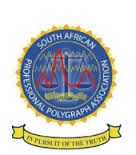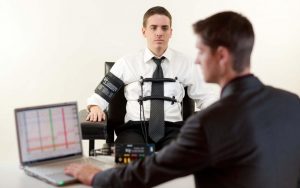The following services are also available:
· Criminal Checks
· Electronically Fingerprint Screening.
· ITC Checks – Company Checks
· Company Screenings
All of our polygraphists were used (with overwhelming success) by different institutions for giving evidence in disciplinary hearings and CCMA cases. However one of the most important facts in the evidence given by the polygraphist is the experience of such a polygraphist and the years he/she is a polygraphist.
Investigations
· Global Polygraph Services are also involved in different Investigations and used by many companies for various investigations.
· We have also been involved by different contractor companies for various cases.
Polygraph test sequence?
1. The polygraph examiner first confers with the client or investigators reads any reports
in connection with the incident and then plans the polygraph test.
2. Pre-Test Interview:
2.1 Advise the examinee of his / her rights, both legal & polygraph rights.
2.2 Discuss the case facts with the examinee.
2.3 Assess examinee’s ability to take the polygraph test (mental & medical history)
2.4 The examinee signs the consent form as well as all other relevant forms used during the
polygraph test.
2.5 Conduct a forensic assessment interview.
2.6 Generate and review all test questions in order to prevent extraneous reactions:
This will:
a) Prevent novelty.
b) Prevent cognitive activity.
c) Remove ambiguities from relevant questions.
d) Focus psychological set.
After being informed of the purpose of the examination, the examinee willingly
consented to polygraph testing and audiovisual recording of the examination after he
or she was informed of and said that he or she understood the testing process. The
examinee responded to questions concerning her suitability for testing and in the
opinion of the examiner, the examinee was suitable for testing.
3. An acquaintance test can be conducted to familiarize the examinee with the testing
process.
3.1. The acquaintance test will proof to the examinee that the polygraph instrument is able
to detect a lie, when instructed to tell a lie. The innocent examinee now believes that
the polygraph instrument will proof his or her innocence. The guilty examinee now
knows that there is no way that he or she can lie during the polygraph test.
3.2. The acquaintance test also allows the examinee to get use to the specific instruments
that has been attached to his or her body.
4. In-Test Phase: Record physiological data, a minimum of three (3) charts.
5. Chart Interpretation: The examinee’s level of nervousness or reactivity is not
explicitly compared against other people, but only against him or herself; he or she
serves as their own control. The examiner evaluates the examinee’s physiological
changes and renders an opinion of Truth or Deception



